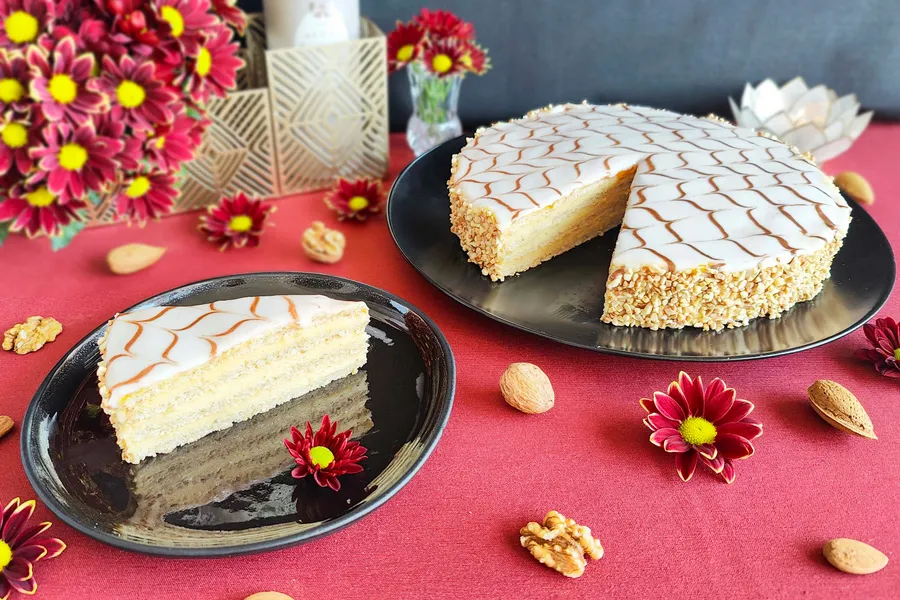
The history of Eszterházy torte
The Esterházy cake is named after the Esterházy family, a Hungarian nobility that played a significant role in the history and culture of Hungary. The Esterházy family was known for their wealth and patronage of the arts and music. The cake was created as a culinary tribute to this influential aristocratic family.
Although the specific recipe and exact origin of the Esterházy cake may have various versions, it is generally associated with the early 20th century. It is believed that the cake was designed by a Hungarian pastry chef to celebrate and honor the Esterházy family.
The connection to the noble family is reflected in the elegance and sophistication of the cake. The original Esterházy cake consists of layers of walnut or almond sponge cake, sandwiched between a buttercream with vanilla flavor. The shiny white glaze and spiral chocolate decorations, distinctive features of the cake, add a touch of refinement and style.
While the Esterházy cake has evolved and adapted over the years, it remains an iconic delight in Hungarian pastry, paying homage to the rich history and heritage of the Esterházy family. Its name and association with Hungarian aristocracy have given it a special status among sweet treats.

 albertoimizcoz
albertoimizcoz

